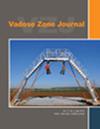Importance of background threshold value development within risk-based corrective action programs
IF 2.8
3区 地球科学
Q3 ENVIRONMENTAL SCIENCES
引用次数: 0
Abstract
Risk-based corrective action (RBCA) programs employ conservative models to develop default values for soil screening, which simplify the risk assessment process. However, for several naturally occurring metals (e.g., arsenic and lead), these published screening values are often unrealistic and well below the documented background levels in soil. This can lead to confusion among the regulated community and inexperienced regulators, as it will inappropriately identify naturally occurring conditions as a release (false positive or Type I error). An effective RBCA program requires the incorporation of defensible background threshold values (BTVs) in the screening process. Recent datasets and BTV development methods are available to enhance existing RBCA programs and reduce the occurrence of Type I errors. This review evaluated the role “background” currently plays in the Texas Risk Reduction Program (TRRP) and offers defensible approaches in minimizing Type I errors estimated by one Texas municipality to directly result in an unnecessary expenditure of over $250,000 annually to address this confusion in the form of additional assessment, remediation, soil management, and even disposal requirements. The same BTV development process demonstrated in this Texas case study can also inform risk assessment efforts in other areas where BTVs can supplement existing RBCA programs.在基于风险的纠正措施计划中背景阈值开发的重要性
基于风险的纠正措施(RBCA)项目采用保守模型来开发土壤筛选的默认值,从而简化了风险评估过程。然而,对于几种天然存在的金属(如砷和铅),这些公布的筛选值往往是不现实的,远低于土壤中记录的背景水平。这可能导致监管机构和缺乏经验的监管机构之间的混淆,因为它将不恰当地将自然发生的情况识别为释放(假阳性或I型错误)。一个有效的RBCA计划需要在筛选过程中纳入可辩护的背景阈值(BTVs)。最新的数据集和BTV开发方法可用于增强现有的RBCA程序并减少I型错误的发生。本审查评估了“背景”目前在德克萨斯州风险降低计划(TRRP)中所起的作用,并提供了可辩护的方法,以最大限度地减少得克萨斯州一个市政当局估计的第一类错误,这些错误直接导致每年超过25万美元的不必要支出,以解决额外评估、补救、土壤管理甚至处置要求的形式造成的混乱。德克萨斯州案例研究中展示的BTV开发过程也可以为其他领域的风险评估工作提供信息,在这些领域,BTV可以补充现有的RBCA项目。
本文章由计算机程序翻译,如有差异,请以英文原文为准。
求助全文
约1分钟内获得全文
求助全文
来源期刊

Vadose Zone Journal
环境科学-环境科学
CiteScore
5.60
自引率
7.10%
发文量
61
审稿时长
3.8 months
期刊介绍:
Vadose Zone Journal is a unique publication outlet for interdisciplinary research and assessment of the vadose zone, the portion of the Critical Zone that comprises the Earth’s critical living surface down to groundwater. It is a peer-reviewed, international journal publishing reviews, original research, and special sections across a wide range of disciplines. Vadose Zone Journal reports fundamental and applied research from disciplinary and multidisciplinary investigations, including assessment and policy analyses, of the mostly unsaturated zone between the soil surface and the groundwater table. The goal is to disseminate information to facilitate science-based decision-making and sustainable management of the vadose zone. Examples of topic areas suitable for VZJ are variably saturated fluid flow, heat and solute transport in granular and fractured media, flow processes in the capillary fringe at or near the water table, water table management, regional and global climate change impacts on the vadose zone, carbon sequestration, design and performance of waste disposal facilities, long-term stewardship of contaminated sites in the vadose zone, biogeochemical transformation processes, microbial processes in shallow and deep formations, bioremediation, and the fate and transport of radionuclides, inorganic and organic chemicals, colloids, viruses, and microorganisms. Articles in VZJ also address yet-to-be-resolved issues, such as how to quantify heterogeneity of subsurface processes and properties, and how to couple physical, chemical, and biological processes across a range of spatial scales from the molecular to the global.
 求助内容:
求助内容: 应助结果提醒方式:
应助结果提醒方式:


